One of the most serious ongoing health crises in America concerns the opioid epidemic. This is an issue that can affect anyone, of any age, whether they live in urban centers or rural communities. Addiction also knows no socioeconomic boundaries.
It’s a problem that killed nearly 450,000 people between 1999 and 2018. To defeat the problem, we also need to understand its origins, the patterns in the last few decades, and educate the public about addiction recovery programs.
We’ve put together this comprehensive opioid epidemic overview to help you or a loved one caught in the grips of addiction.
Opioids Throughout History
What are opioids anyway? Opioids refer to a class of drugs that originate from the opium poppy plant. Opium is certainly not a new drug. In fact, it’s actually been used for more than 7,000 years.
Some historians think it was used as far back as the Neolithic period. The ancient Greeks revered opium. There have even been “poppy goddess” figurines found in Crete.
Opium use spread throughout Asia, the Middle East, and Europe for centuries. However, perhaps the biggest influence was the introduction of laudanum in 1676. It was widely sold in apothecary shops as a treatment for a variety of ailments until after WWII.
It wasn’t until recently that the potential side effects of opium were acknowledged.
Opioid Medications
Some opioid medications are made directly from the poppy plant. Others are created synthetically in a lab. All such drugs interact with opioid receptors that live on the nerve cells.
In turn, these nerve cells affect the body and brain. Common opioids include:
- Oxycodone – (OcyContin®)
- Hydrocodone (Vicodin®)
- Codeine
- Morphine
- Fentanyl
- Methadone
Heroin is also classified as an opioid, but it is illegal, while a doctor usually prescribes the other drugs.
Medical Uses of Opioids
Opioids are often prescribed to relieve pain, and they can be effective in helping people recover after surgery, accident, or the management of chronic pain. However, they can also be highly addictive, which is extremely dangerous.
The problem lies in the euphoria that accompanies pain relief. For some, the euphoria can become necessary. This often leads to misuse of the drug (taking more than necessary or without a doctor’s prescription).
The misuse and increasing need for drugs can lead to tragic consequences, including accidental overdose and death.
Why Opioid Addiction Occurs So Readily?
You might wonder why opioids wreak such havoc. It all comes down to the pleasurable feeling that accompanies the pain relief. According to the Mayo Clinic, addiction is described as something that started out as pleasurable that a person now can’t live without.
Opioid users can develop an “irresistible craving for a drug”, especially the high/pleasure. Opioids release endorphins in the brain, which makes the person feel good. However, once the dose wears off, he/she needs more in order to hold on to that feeling of pleasure.
Often, the person ends up needing the drug just to function normally. The compulsion to take opioids often leads to misuse, illegal means of acquiring the drug, and accidental overdoses.
How Bad Is the Opioid Epidemic?
According to the National Institute on Drug Abuse, 2018 data shows that 128 people die every day in the US from an overdose of opioids. The economic burden of addiction is $78.5 billion a year, according to the Centers for Disease Control (CDC).
Here are some 2018 opioid epidemic statistics from the U.S. Department of Health and Human Services (HHS):
- 47,600 died from an opioid-related drug overdose
- 32,656 deaths attributed to overdosing on drugs other than methadone
- 3 million misused prescription opioids
- 2.0 million people have an opioid use disorder
- 2 million people misused prescription opioids for the first time
76 percent of deaths occurred in people under the age of 50. Men 18-34 had three times the number of opioid-related deaths compared to women. Data from the Substance Abuse and Mental Health Services Administration indicates that misuse of opioid prescriptions occurs in people in their early to mid-20s.
Opioid addiction doesn’t only affect those who take the drugs. Pregnant mothers who take opioids can pass on the addiction to their unborn babies. Those babies often exhibit withdrawal symptoms after their born.
Opioid Epidemic by State
It’s easy to think that the opioid epidemic only affects those in big cities. However, a look at state data shows a different story. West Virginia actually leads in overall opioid overdose deaths (42.4/100,000 persons) and in the number of opioid prescriptions (69.3/200 persons).
Other top states include:
- Maryland
- New Hampshire
- Ohio
- Massachusetts
- Connecticut
- Washington, D.C.
- Rhode Island
- Kentucky
- Maine
- Vermont
States with the lowest rates include California, Texas, Iowa, and Mississippi.
History of the Opioid Epidemic
Experts who have tracked the opioid epidemic break down the history of addiction into three distinct waves.
Wave 1
The first wave began in the early 1990s when health officials first noticed an increase in opioid-related overdoses and deaths. The uptick was no coincidence.
It was during this time that doctors began prescribing opioid and opioid-combination medications to treat pain. Most were not aware that these drugs came with a high risk of addiction. There was also an increase in prescriptions for non-cancer-related pain, even though there wasn’t much data concerning the risks or benefits of opioids.
By the end of the decade, 86% of prescriptions were being written for non-cancer-related pain. Communities with the highest rates of prescriptions were also seeing higher rates of opioid abuse and illegal activity involving the way people were getting their hands on these drugs.
Wave 2
The second wave began around 2010. By this time, there was a concerted effort to limit the rates of opioid prescriptions. This led people to seek illegal means of buying opioids. Enter heroin, which was cheap and easily available.
Heroin abuse increased, along with deaths, which went up by 286 percent from 2002 to 2013. Heroin – which is injected with a needle – also increased the risks of other infections and diseases, including HIV/AIDS, hepatitis B and C, skin infections, and even heart infections.
It is believed that 80 percent of heroin users were previously involved in misusing prescription opioids.
Wave 3
The most recent wave began around 2013 when increased use of synthetic opioids like fentanyl led to a rise in deaths. In 2016, there were over 20,000 deaths from fentanyl and other drugs.
During this time, the CDC began issuing new guidelines for doctors who were prescribing opioids for non-cancer-related pain, palliative care, and end-of-life care. The new guidelines suggested non-opioid drugs should be given first to treat chronic pain.
Unfortunately, those in the medical community have not always followed the guidelines. There have also been noteworthy scandals tied to walk-in clinics (called pill mills) that sold vast amounts of opioids. One such clinic in Florida is believed to have supplied 85 percent of the country’s oxycodone prescriptions.
As addiction numbers continued to soar, the HHS finally declared the opioid crisis a public health emergency in 2017. The Federal government also launched a Five-Point Strategy to Combat the Opioid Crisis.
How to Treat Opioid Addictions
Treating opioid addiction is not always easy. However, there are effective and safe ways to wean someone away from dependence.
One option involves medication therapy. Buprenorphine (Suboxone® or Subutex®) are considered “essential medicines” by the World Health Organization (WHO). Other medications include methadone, and extended-release naltrexone (Vivitrol®).
A study by NIDI found that a combination of buprenorphine/naloxone and extended-release naltrexone can also be effective. The only drawback is that naltrexone can only be used after full detoxification.
Most health and mental experts recommend that medication therapy should be used in conjunction with behavioral counseling and psychological therapy. This method is sometimes referred to as Medication-Assisted Therapy.
The NIH has also instituted guidelines to fight the opioid epidemic. They are looking for solutions to the opioid crisis by discovering better ways to prevent opioid misuse, treat opioid use disorders, and manage pain. In the summer of 2017, NIH met with pharmaceutical companies and academic research centers to discuss
This includes:
- Safe, effective, non-addictive strategies to manage chronic pain
- New, innovative medications and technologies to treat opioid use disorders
- Improved overdose prevention and reversal interventions to save lives and support recovery
In April 2018 at the National Rx Drug Abuse and Heroin Summit, NIH Director Francis S. Collins, M.D., Ph.D., announced the launch of HEAL (Helping to End Addiction Long-term) Initiative, an aggressive, trans-agency effort to speed scientific solutions to stem the national opioid public health crisis.
Free Yourself From Opioid Addiction
The opioid epidemic is one that continues to ravage the country. Recovery is possible, however. There are treatment options that free you or a loved one from addiction. A drug-free life will open up possibilities to a brighter future and healed relationships.
We have comprehensive programs that can all be done online during the COVID-19 crisis. Our online programs include:
- Medication-Assisted therapy
- Group therapy
- 12-step program
- Christian addiction program
- At home opioid detox
- Outpatient addiction treatment
If you are ready to start treatment, contact us today.


